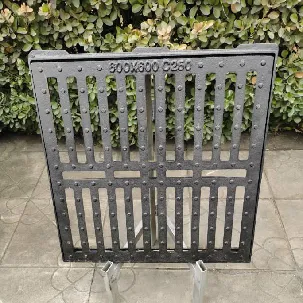butterfly check valve
Understanding Butterfly Check Valves Design, Function, and Applications
Butterfly check valves are integral components in various fluid control systems, designed to prevent backflow while allowing unrestricted flow in one direction. These valves are characterized by their disc-shaped mechanism, resembling the wings of a butterfly. When fluid flows in the intended direction, the disc remains open, facilitating efficient flow. However, if the flow reverses, the pressure causes the disc to close, thereby preventing backflow and protecting the integrity of the system.
Design and Mechanism
The butterfly check valve consists of several key components the body, the disc, the shaft, and the seat. The valve body houses the disc and is generally constructed from durable materials such as cast iron, stainless steel, or plastic, depending on the application requirements. The disc is mounted on a shaft that allows it to pivot smoothly between open and closed positions. This rotational movement is essential for the valve's quick response to changing flow conditions.
The design of butterfly check valves offers several advantages
. Their compact size and lightweight nature make them easy to install in various systems, including piping networks, wastewater treatment facilities, and chemical processing plants. Additionally, their straightforward mechanism allows for rapid sealing, ensuring minimal backflow and reducing the risk of contamination in the system.Advantages and Applications
One of the primary benefits of butterfly check valves is their efficiency in handling large volumes of fluid. The streamlined design minimizes pressure drop, which is crucial in applications where maintaining system pressure is vital. Furthermore, these valves are capable of operating under a wide range of temperatures and pressures, making them versatile for different industries, such as water treatment, HVAC systems, oil and gas, and food processing.
butterfly check valve

Another significant advantage is their ease of maintenance. Unlike traditional swing check valves, which can require more complex servicing, butterfly check valves typically require less frequent maintenance, reducing operational downtime and costs. Their robust design often ensures a long service life, providing reliable performance even in challenging conditions.
Installation and Considerations
When installing butterfly check valves, it's essential to consider several factors. The orientation of the valve (horizontal or vertical) can impact its performance, and it is crucial to ensure proper alignment within the pipeline. Additionally, the selection of materials must be matched to the specific fluid being transported; for instance, corrosive substances may necessitate the use of stainless steel or specialized plastics.
It is also important to assess the valve's size to ensure compatibility with the existing piping system. An improperly sized valve may lead to inadequate flow control or increased wear and tear, ultimately compromising system efficiency.
Conclusion
Butterfly check valves play a critical role in modern fluid control applications, providing an effective solution for preventing backflow and maintaining system integrity. Their design, characterized by simplicity and efficiency, makes them a preferred choice in various industries. By understanding their function, advantages, and installation considerations, engineers and technicians can make informed decisions that enhance operational efficiency and reliability in fluid management systems.
-
The Smarter Choice for Pedestrian AreasNewsJun.30,2025
-
The Gold Standard in Round Drain CoversNewsJun.30,2025
-
The Gold Standard in Manhole Cover SystemsNewsJun.30,2025
-
Superior Drainage Solutions with Premium Gully GratesNewsJun.30,2025
-
Superior Drainage Solutions for Global InfrastructureNewsJun.30,2025
-
Square Manhole Solutions for Modern InfrastructureNewsJun.30,2025
-
Premium Manhole Covers for Modern InfrastructureNewsJun.30,2025
